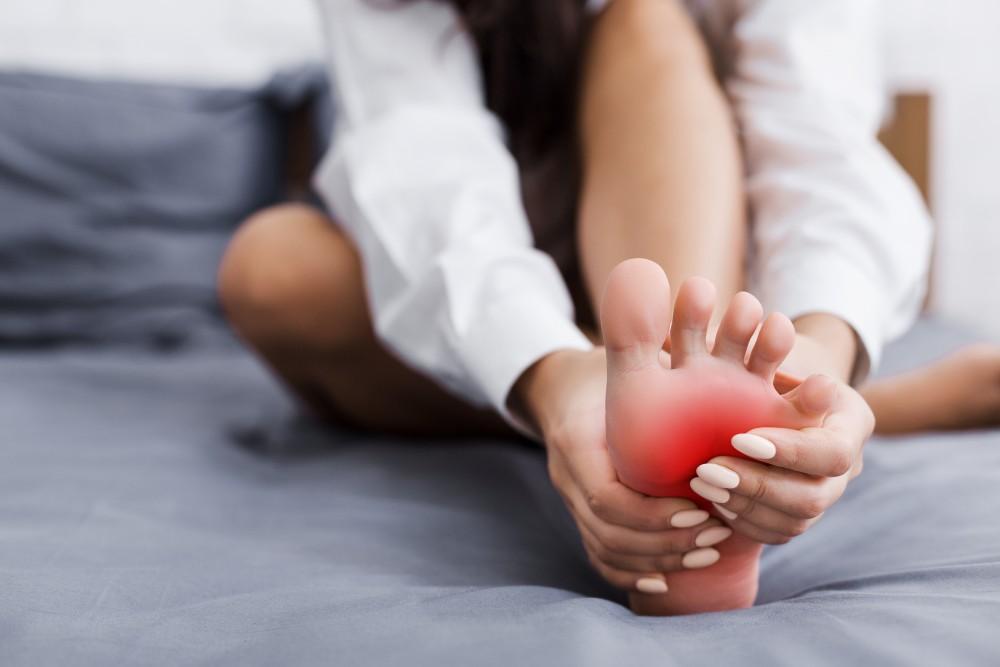
5 Helpful Tips to Care For Your Diabetic Foot at Home

If you live with diabetes, you must be vigilant about monitoring your health. This includes tracking your blood glucose levels, managing your insulin, carefully planning your meals, and getting enough exercise.
One thing you must also pay attention to is your feet. Feet in people with diabetes are prone to developing certain problems, and these problems can turn serious quickly. At Premier Foot & Ankle, we specialize in diabetic foot care. In this blog, we discuss why taking care of your feet is especially important if you have diabetes and give five tips on how to keep them healthy.
The link between diabetes and foot problems
If you have diabetes, you have a higher chance of developing foot problems for a number of reasons. For example, you may not get adequate blood flow to your feet, so you may not fight off infections well.
And if you get a cut — even a tiny one — this could lead to serious problems. This is because you may not even know you have a cut, because diabetes can cause nerve damage and loss of feeling in the feet. And if you aren’t aware of a cut, it could become infected.
And because diabetes affects the immune system, your ability to heal can be compromised, too. So a small problem like a tiny cut can become a major problem with big consequences. It could even lead to the need for toe or foot amputation or cause a life-threatening systemic infection, such as sepsis.
Having diabetes also puts you at a greater risk for developing other foot problems, such as corns, fungal toenails, and ingrown toenails.
Helping your feet at home
Here are five things you can do at home to keep your feet healthy:
1. Protect, protect, protect
You can avoid potentially injuring your feet if you take a proactive approach. This means checking your shoes for small objects or pebbles every time you put them on, not exposing your feet to extreme temperatures, and never going barefoot.
2. Choose the right footwear
Give your diabetic feet the care they need by wearing shoes that are comfortable, supportive, and well-fitting. Furthermore, wear closed-toe shoes whenever possible. If you’re not sure what to wear, we can recommend special shoes that can help keep your feet comfortable and protected.
3. Daily care
Simple daily practices can help keep your feet in tip-top shape. Be sure to gently wash your feet with warm water and dry them thoroughly. You should also moisturize the tops and bottoms of your feet. However, don’t moisturize between your toes, because that may contribute to infection.
Always trim your toenails straight across to avoid an ingrown toenail, and then file them so a jagged edge won’t cut your skin.
4. Be a foot sleuth
Since small injuries can become serious, don’t rely just on how your feet feel to ensure that you don’t have a nick or cut. Inspect your feet daily. That way you’ll see anything you may not feel and be able to address it with your doctor.
5. Engage in foot-friendly exercise
Running long distances and playing sports where you jump or kick frequently may put your feet at risk for injury. Try exercises that are gentle on your feet, such as swimming and bicycling. If you swim at a public pool, wear shoes in the locker room so you don’t expose yourself to fungus.
Check in with us
In addition to the foot-care strategies listed above, don’t skip visiting us. It’s important that you see your podiatrist, so they can inspect your feet regularly and provide treatment if necessary. Your podiatrist will let you know how often you should come in depending on your condition. You should also come in right away if you notice an injury on your foot. Prompt care is always critical.
To get the best in diabetic foot care, book an appointment online or over the phone with Premier Foot & Ankle today.
You Might Also Enjoy...


Lapiplasty: How 3D Bunion Correction Works

How to Get to the Root of Your Chronic Heel Pain

5 Ways to Care for Your Athletic Feet This Year

How to Keep Toenail Fungus From Spreading


